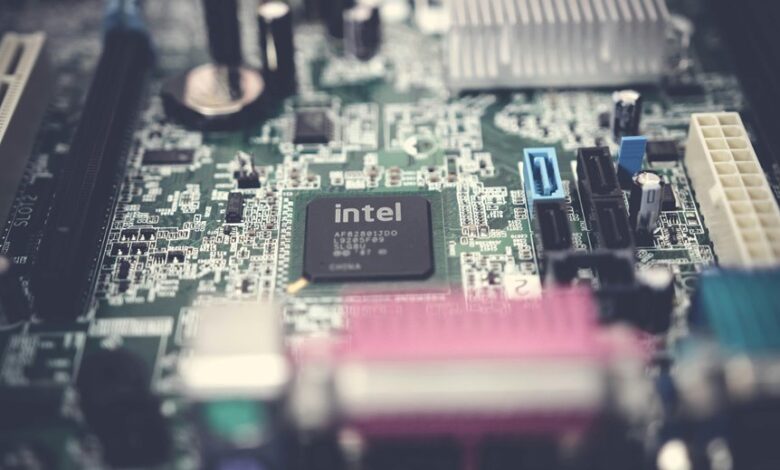8312×86

The 8312×86 architecture marks a significant milestone in computing history. Its modular design prioritizes simplicity and user interaction. Over time, this architecture has adapted to meet increasing demands for speed and multitasking. It also retains compatibility with older software, which is crucial for various sectors. As technology continues to evolve, the implications of the 8312×86 architecture could redefine future innovations in computing. What lies ahead for this influential architecture?
Historical Background of 8312×86
The 8312×86 architecture represents a significant milestone in the evolution of computing technology.
Its historical significance lies in the way it paved the path for numerous technological advancements. By introducing a versatile framework, it enabled developers to create a wide range of applications, enhancing user freedom and interaction.
This architecture marked a turning point, shaping the future of computing and influencing subsequent innovations.
Architectural Features and Design Principles
Significant architectural features and design principles characterize the 8312×86 architecture, contributing to its widespread adoption and influence.
The integration of design aesthetics with functional efficiency ensures a balance between performance and usability. This architecture emphasizes modularity, allowing for flexible configurations, while also promoting simplicity in design, making it appealing to developers and users who value both practicality and visual coherence in their computing experiences.
Evolution of 8312×86 Over the Years
The evolution of the 8312×86 architecture has been marked by significant enhancements in design, which have continually improved its efficiency and capability.
These architectural advancements have played a crucial role in boosting computing performance, allowing for faster processing and greater multitasking abilities.
As technology progresses, the 8312×86 continues to adapt, reflecting the changing demands of modern computing.
Architectural Enhancements in Design
Over the decades, numerous architectural enhancements have transformed the design of the 8312×86 microprocessor, reflecting advancements in technology and shifts in computing demands.
Key improvements include design optimization techniques that streamline processing capabilities and enhance performance efficiency.
These innovations have enabled the microprocessor to adapt to evolving requirements, ensuring its relevance in an increasingly complex computing landscape while maintaining robust functionality.
Impact on Computing Performance
As advancements in technology progressed, the 8312×86 microprocessor evolved to meet increasing demands for computing performance. This evolution significantly impacted performance benchmarks and computational efficiency, allowing users to experience enhanced capabilities.
| Year | Performance Benchmark |
|---|---|
| 1990 | 100 MIPS |
| 2000 | 1,000 MIPS |
| 2020 | 10,000 MIPS |
Compatibility and Legacy Support
The compatibility of the 8312×86 architecture with legacy software remains a critical concern for users relying on older applications.
Hardware compatibility issues often arise as new technologies emerge, potentially hindering seamless integration with existing systems.
Additionally, operating system support plays a pivotal role in determining the overall functionality and usability of legacy programs within the 8312×86 framework.
Legacy Software Functionality
While modern computing environments evolve rapidly, ensuring compatibility with legacy software remains a critical concern for organizations.
Functionality analysis of these systems reveals the necessity of maintaining their operational capabilities. Organizations must balance innovation with the preservation of essential legacy software to safeguard their investments.
Effective strategies can mitigate risks while enabling organizations to harness the benefits of both new and old technologies.
Hardware Compatibility Issues
Although advancements in hardware technology have propelled computing capabilities forward, compatibility issues with legacy systems remain a significant challenge for organizations.
Hardware limitations can hinder the integration of new components, leading to driver conflicts that disrupt operations.
Organizations must navigate these challenges carefully to maintain efficiency while leveraging modern technology, ensuring that legacy systems remain functional alongside contemporary hardware solutions.
Operating System Support
Operating system support plays a crucial role in determining the compatibility of new hardware with existing systems. Effective operating system compatibility ensures that users can leverage advanced features without complications.
Moreover, robust driver support is essential for optimal performance, allowing devices to function seamlessly with various software environments.
Legacy support further enhances usability, enabling users to maintain older systems while integrating contemporary technology.
Applications and Use Cases in Modern Technology
The 8312×86 architecture has become integral to various modern technology applications, demonstrating its versatility across numerous sectors. It excels in embedded systems, enabling efficient processing in devices like smart appliances. Additionally, its role in virtualization technology allows multiple operating systems to run concurrently, enhancing resource utilization.
| Sector | Application | Key Benefit |
|---|---|---|
| Embedded Systems | Smart Appliances | Efficient Processing |
| Virtualization | Cloud Computing | Resource Utilization |
| Telecommunications | Network Routers | Enhanced Performance |
| Automotive | Advanced Driver Assist | Safety Improvements |
Future Prospects and Innovations in 8312×86
Innovations in the 8312×86 architecture are poised to shape the future landscape of computing, with significant advancements anticipated across various domains.
Quantum computing integration will enhance processing capabilities, while AI integration promises to revolutionize machine learning applications.
These developments will empower users, fostering a more dynamic and efficient computing environment, and ultimately driving forward the capabilities of technology in unprecedented ways.
Conclusion
In conclusion, the 8312×86 architecture has proven to be a cornerstone of modern computing, blending simplicity with versatility. Its continued evolution ensures robust performance across diverse applications, from embedded systems to cloud computing. As it stands poised for future innovations, one can only imagine how this architecture will shape technological landscapes, much like the way floppy disks once revolutionized data storage. The 8312×86 remains a testament to the enduring legacy of thoughtful engineering in an ever-changing digital world.




